The UK is on the edge of the great land mass of Europe and Asia, and our natural history reflects our place in the world.
Take the wood sandpiper.
Globally this is one of the most successful bird species. Its range spans Africa, Europe, Asia, the Pacific and Australia, even brushing northwestern edges of North America.
It is, for now, still common across big swathes of the world. Even as many of the great wetlands have been drained, converted for agriculture, or evaporating into arid flatlands, wood sandpipers seem to have found a way to make a living in the remaining muddy margins.
And yet, on our shores, it’s a scarce treat to see one.
Or to hear one - for many of the wood sandpipers recorded in the UK betray their presence only with the shrill whistle that is their flight call.
As with many wading birds, there’s a plaintive, haunting quality to their voices.
Like the cries of whimbrel, greenshank, and green sandpiper, it’s a sound that might cut through the night air quite unexpectedly in late spring or early autumn, as birds migrate overland in the relative safety of darkness, calling as they go.
These disembodied calls of waterbirds have long been subject to the imagination of human listeners. Variations of a tale involving ‘seven whistlers’ to be found in western Britain interpet the sounds as portents of death or disaster. Nowadays they are more likely a sign that you can make an impressive addition to the list of birds recorded from your garden.
But how to tell it’s a wood sandpiper? In pace and phrasing it can sound like the succession of notes given by a whimbrel or a common sandpiper, rapid-fire and descending slightly in tone.
However, the wood sandpiper’s call is lower and more solid than the common sandpiper’s, and sweeter than the whimbrel’s.
It’s more of a ‘chip-chip-chip’. You might think ‘wood’ and ‘chip’.
The Bank Holiday weekend in August is a good time to listen out for one in the UK. Wood sandpipers breed at northerly latitudes, and their season there is short. Birds begin to return south as early as July, and continue to pass through on their way to the Mediterranean and Africa into September.
They prefer freshwater marshes with some vegetation, and are easy to miss if they’re feeding in the greenery beside a pool, as is their habit.
Here, again, the chipping call is a helpful clue when one’s disturbed and flies into the open, perhaps only as far as the next nearest water’s edge.
With luck or patience, you will see its elegant profile: long, yellow-green legs, slim body and straight bill. The mottled feathers on its wings and back, and the strong, pale stripe over the eye help distinguish it from similar-looking waders, and overall it’s an especially attractive and characterful bird to watch.
Remarkably, Scotland now has a small but seemingly healthy breeding population, (perhaps three dozen pairs) spread widely across the Highlands.
Most of the birds we see and hear further south in the UK will likely be from the much larger populations of Scandinavia and Russia.
But it’s tantalising to wonder whether, with a revival of our wilder places, we might find more homegrown wood sandpipers chipping through our night skies and over our wetland edges.
Another bog standard: Green Sandpiper
This is instalment #25 in 2024’s cycle of Shriek of the Week. You can catch up with House Sparrow, Cirl Bunting, Swift, Red-backed Shrike, Goldfinch, Tree Pipit, Blue Tit, Reed Warbler, Cuckoo, Willow Warbler, Swallow, Green Woodpecker, Blackcap, Nuthatch, Starling, Chiffchaff, Collared Dove, Wren, Dunnock, Great Spotted Woodpecker, Robin, Great Tit, Song Thrush and Blackbird.
Posts are less than weekly between July and January, reflecting the quieter season, but Early Bird Club sessions continue every first Saturday through the year for paying subscribers - the next is Saturday 7 September. We’ll be there, whatever the weather.
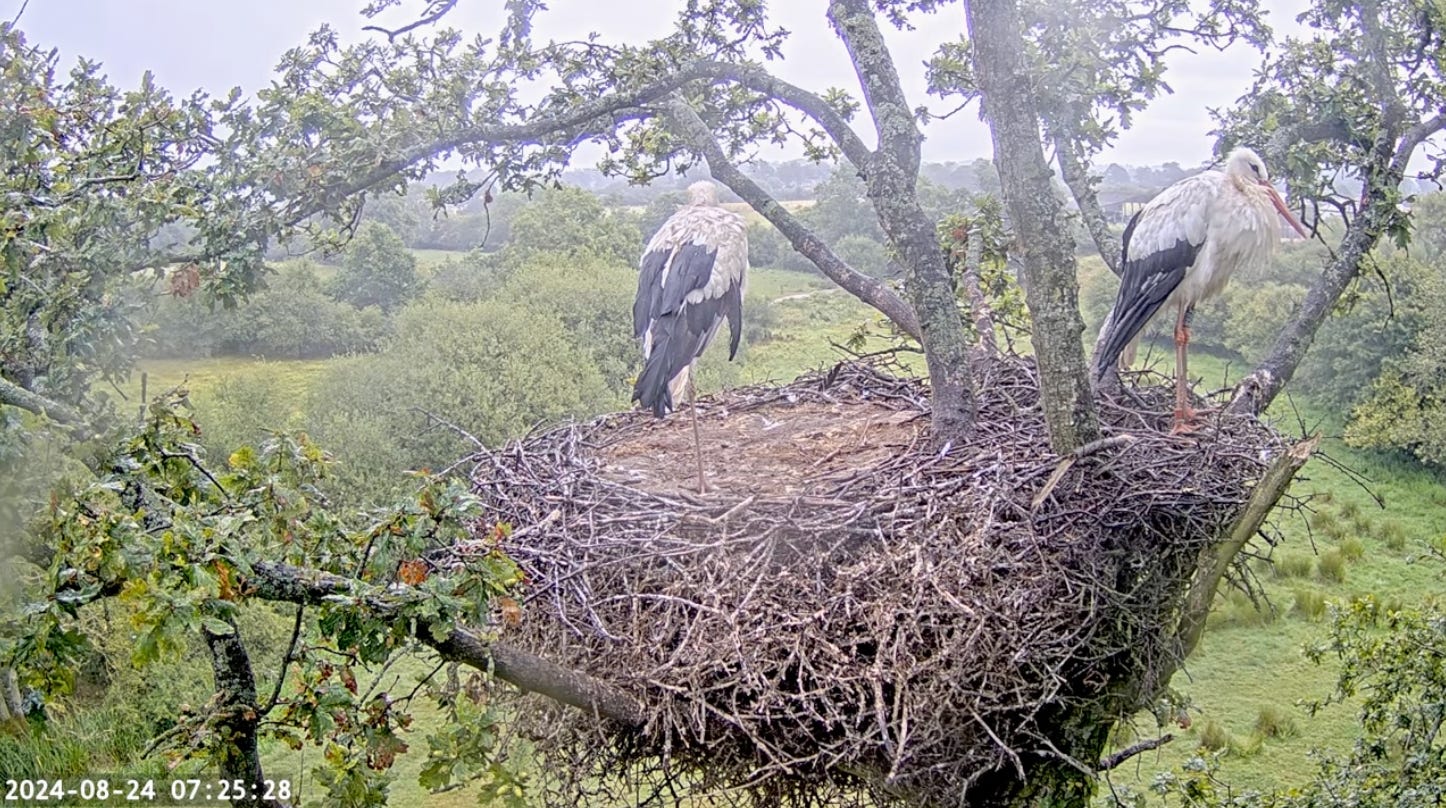
Media credits:
Audio by Peter Boesman. Reproduced with kind permission - orginally published at xeno-canto.org/281149.
Wood sandpiper image by Tisha Mukherjee, reproduced under CC BY-SA 4.0 , via Wikimedia Commons
Green sandpiper image by Charles J. Sharp, licensed CC BY-SA 4.0, via Wikimedia Commons

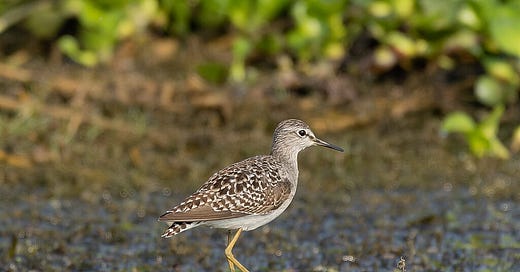
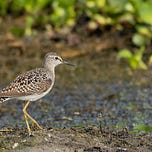


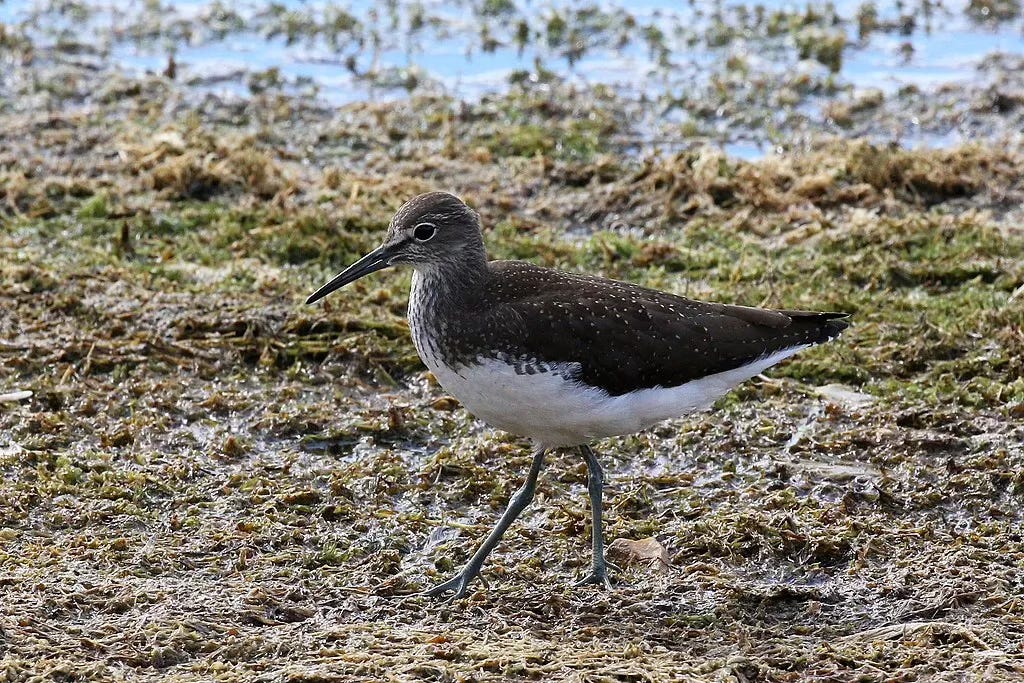

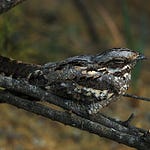
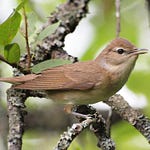

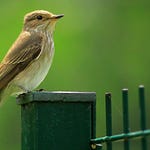


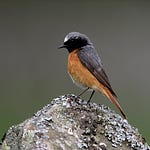

Share this post